ITE vs. BTE Hearing Aids: Which Type Suits Your Needs Best?
In-the-Ear vs. Behind-the-Ear Hearing Aids: A Closer Look
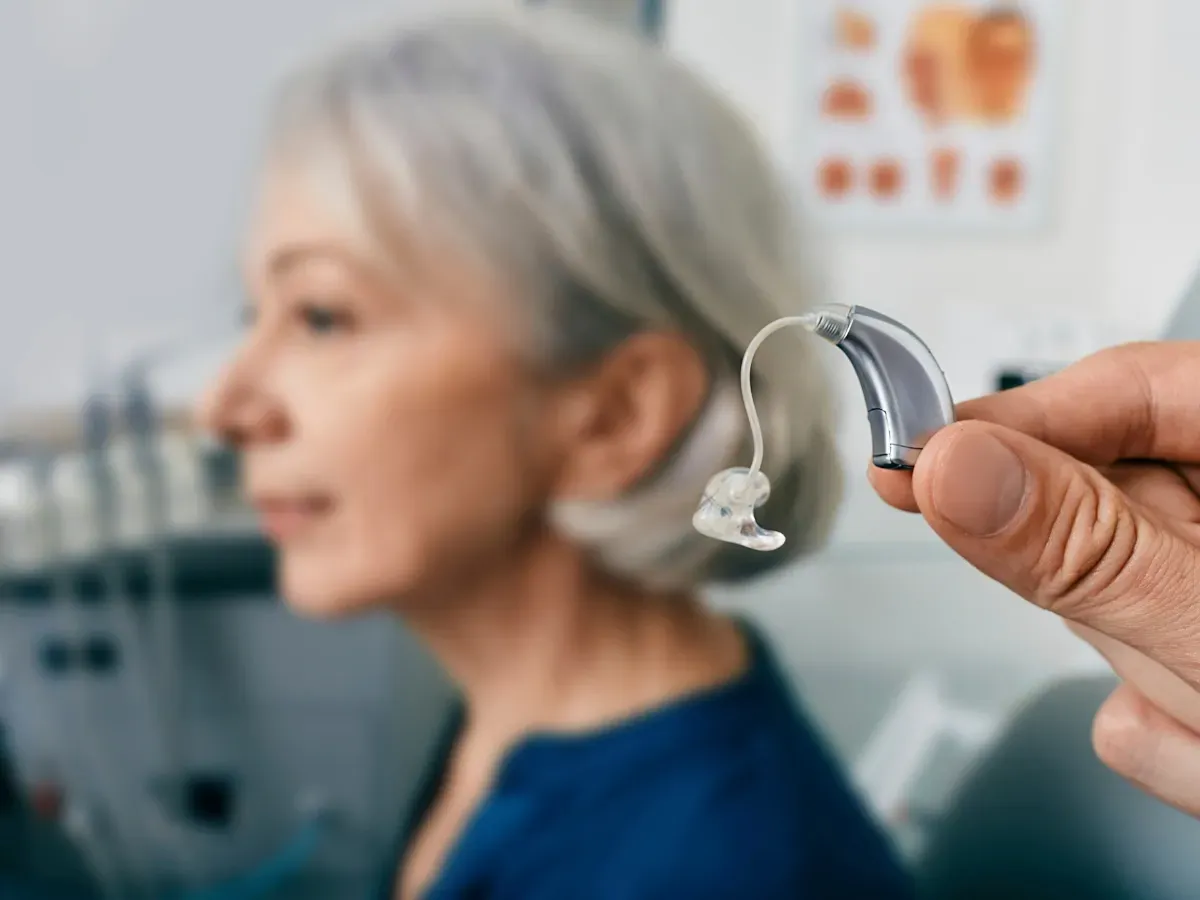
Understanding the nuances of each type of hearing aid, including its cost, can help you make an informed decision about which one might be your perfect match!
ITE Hearing Aids
ITE hearing aids are custom-molded to fit snugly within your ear canal. They offer a discreet solution for those who prefer their hearing aids to be less noticeable. Here's a breakdown of the different ITE styles:
- Completely-in-the-Canal (CIC): These tiny marvels are practically invisible! CIC hearing aids are an excellent choice for those with mild to moderate hearing impairment who value subtlety.
- In-the-Canal (ITC): Slightly larger than CICs, ITC hearing aids still fit comfortably within the ear canal, offering a balance of discreetness and features. They are suitable for a wider range of hearing loss than CICs.
- In-the-Ear (ITE): These are the largest of the ITE models, filling the outer portion of the ear. ITE hearing aids can accommodate more advanced features, such as larger microphones and more powerful batteries, making them suitable for people with mild to severe hearing loss.
While ITE hearing aids offer a discreet solution, their smaller size can sometimes mean smaller batteries and a potential feeling of blockage in the ear for some individuals.
BTE Hearing Aids
What does BTE mean? Behind-the-ear. These hearing aids are made to fit comfortably behind the ear and are available in a range of styles to accommodate various needs and preferences:
- Traditional BTE: These are the most powerful BTE devices, often recommended for individuals with severe to profound hearing loss. They are known for their durability and ease of use.
- Receiver-in-Canal (RIC): One of the benefits of RIC hearing aids is they offer a blend of power and discretion. The receiver (speaker) is positioned right in the ear canal, linked to the primary device located behind the ear via a slender wire. This makes them a favored option for individuals with various levels of hearing loss.
- Mini BTE: These are smaller and more discreet versions of traditional BTEs. They provide excellent performance while maintaining a lower profile behind the ear.
BTE hearing aids are known for their power, durability, and ability to accommodate advanced features like directional microphones and rechargeable batteries. However, they are generally more visible than ITE models.
| Feature | ITE Hearing Aids | BTE Hearing Aids |
|---|---|---|
| Size and Visibility | Small and discreet, some styles are nearly invisible. | Traditionally larger and more noticeable, but newer styles are smaller and more discreet. |
| Comfort | It can be very comfortable for many, but some may experience a feeling of fullness or blockage in the ear. | They are generally comfortable as they don't obstruct the ear canal opening. |
| Technology and Features | It can accommodate some advanced features, especially larger models, but may have limitations due to size. | Offer a wider range of advanced features and technology due to larger size. |
| Durability and Water Resistance | May be more susceptible to damage from moisture and earwax. | Generally more durable and water-resistant, making them suitable for active lifestyles. |
| Battery Life | Typically have shorter battery life due to smaller battery size. | Often have longer battery life and may offer rechargeable options. |
| Handling and Controls | It can be more challenging to handle for those with dexterity issues. | Generally easier to handle and adjust due to larger size and controls. |
| Cost | Can start at a lower price point for basic models. | Tend to be more expensive, especially for models with advanced features. |
| Maintenance | It may require more frequent cleaning and maintenance due to placement in the ear canal. | Generally easier to clean and maintain. |
| Phone Use | It can be more convenient for phone use as they don't interfere with the receiver. | It may require adjustments or accessories for optimal phone use. |
| Best Suited For | Individuals with mild to severe hearing loss who prioritize discretion and aesthetics. | Individuals with a wide range of hearing loss, especially those with active lifestyles or who need advanced features. |
Round 1: Comfort and Fit
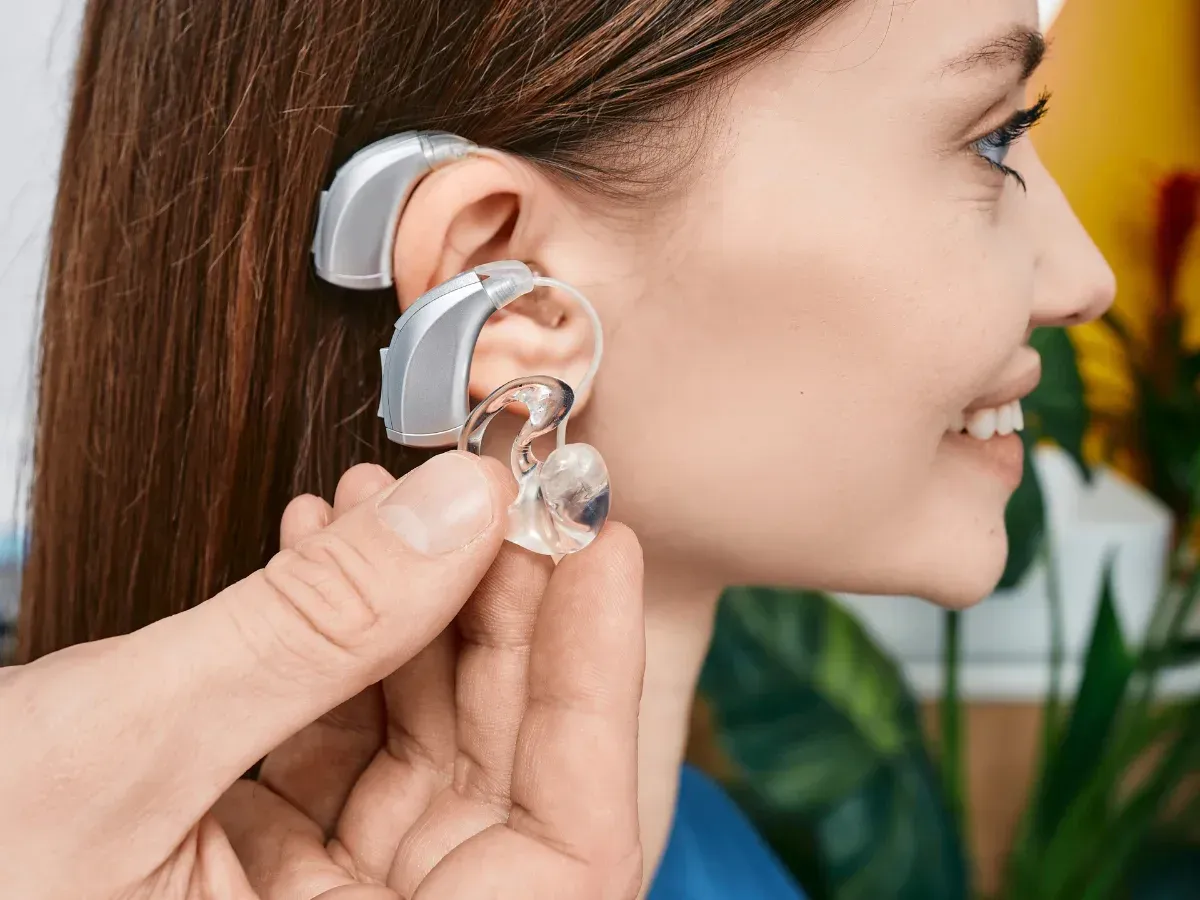
Let's talk about comfort! Because you'll likely be wearing your hearing aids for most of the day, finding a pair that feels good is essential. Both ITE and BTE hearing aids are designed with your comfort in mind, so you can rest assured that you'll find a comfortable fit.
ITE Hearing Aids
ITE hearing aids are tailor-made to securely fit within your ear canal. This means they are molded to the unique contours of your ear, which can be quite comfortable for many people.
Nonetheless, as they are positioned directly in the ear canal, certain individuals might feel a sensation of fullness or obstruction, referred to as the 'occlusion effect.'
The amplified sound of your voice can often minimize this sensation with proper fitting and adjustments by your hearing care professional.
BTE Hearing Aids
BTE hearing aids sit comfortably behind the ear, so they don't obstruct the ear canal opening. This means they generally avoid the occlusion effect. The part that goes inside the ear canal (the earmold or dome) is typically made from soft materials designed for comfortable, all-day wear.
And the Winner Is...
It's a tie! In comparing in-ear vs. behind-ear aids, both can be very comfortable when properly fitted. The best choice for you will depend on factors like the size and shape of your ear canal, your sensitivity to having something in your ear, and your personal preferences.
A qualified hearing care professional can help you choose the most comfortable option, make any necessary adjustments for a perfect fit, and provide ongoing support and maintenance for your hearing aids. Their expertise is invaluable in ensuring you get the most out of your hearing aids.
Round 2: Visibility and Aesthetics
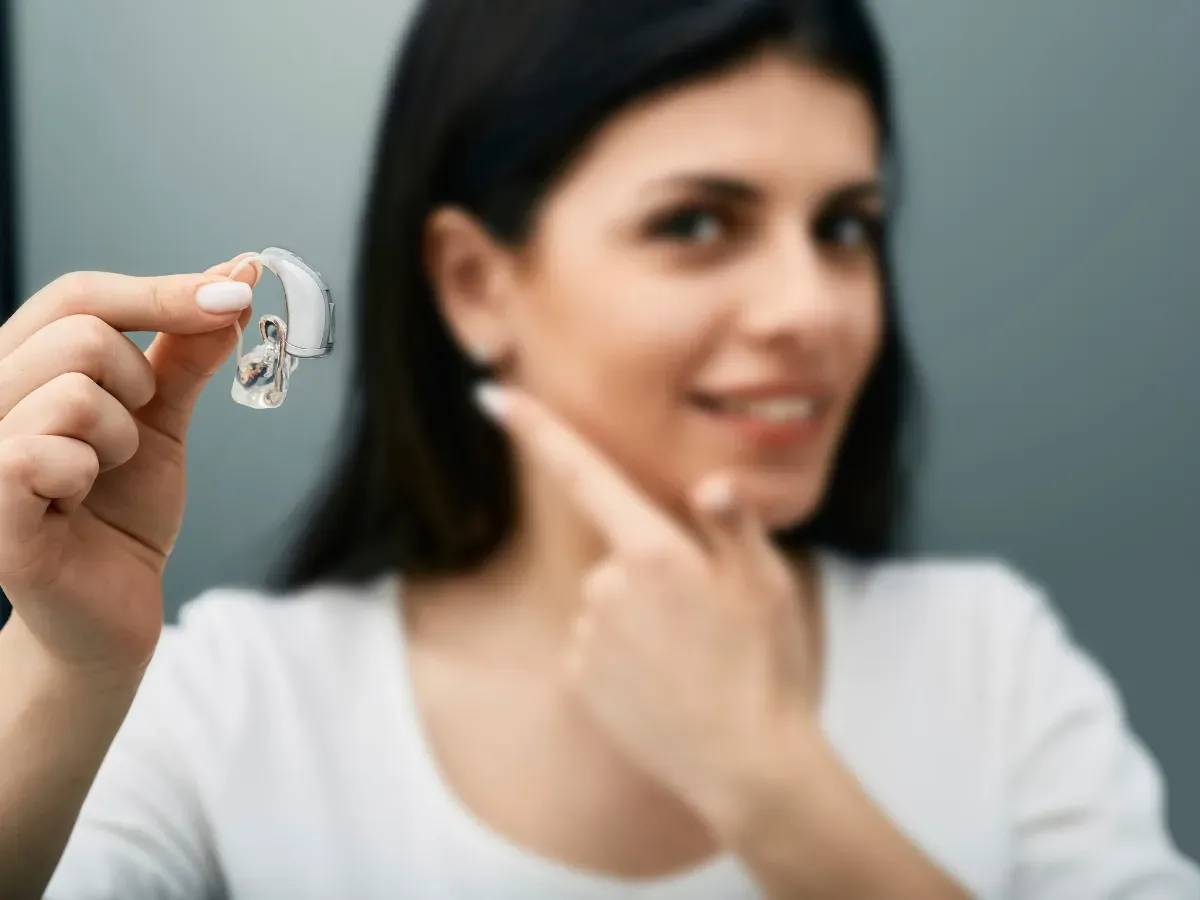
Let's be honest: how our hearing aids look matters! In this round, we'll compare ITE and BTE hearing aids in terms of their visibility and aesthetics.
ITE Hearing Aids
When it comes to discretion, ITE hearing aids are the clear winner. These gadgets are crafted to fit tightly within the ear canal, rendering them nearly undetectable and allowing you to wear them with confidence, free from self-consciousness.
- Completely in the Canal (CIC): Due to their small size, these tiny wonders are practically invisible, making them a popular choice for those who prioritize a discreet look.
- In-the-Canal (ITC): Slightly larger than CICs, ITC hearing aids are still quite discreet and offer a good balance of visibility and features.
- In-the-ear (ITE): The largest of the ITE styles, these fill the outer ear and are more visible than CICs or ITCs. However, they remain quite subtle and can be coordinated with your skin tone for a more natural appearance.
BTE Hearing Aids
BTE hearing aids, while traditionally more visible than ITEs, have become increasingly discreet in recent years.
- Mini BTE: These smaller versions of traditional BTEs offer a good balance of power and discretion.
- Receiver-in-Canal (RIC): With the receiver (speaker) sitting directly in the ear canal, RIC hearing aids have a thin wire connecting to the main device behind the ear, making them less noticeable than traditional BTEs.
And the Winner Is...
For pure invisibility, ITE hearing aids, especially CICs, take the win! However, with the advancements in mini BTE and RIC styles, BTE hearing aids are catching up in the aesthetics department.
In the end, the ideal option relies on your individual preferences and the level of importance you place on discretion.
Round 3: Technology and Features
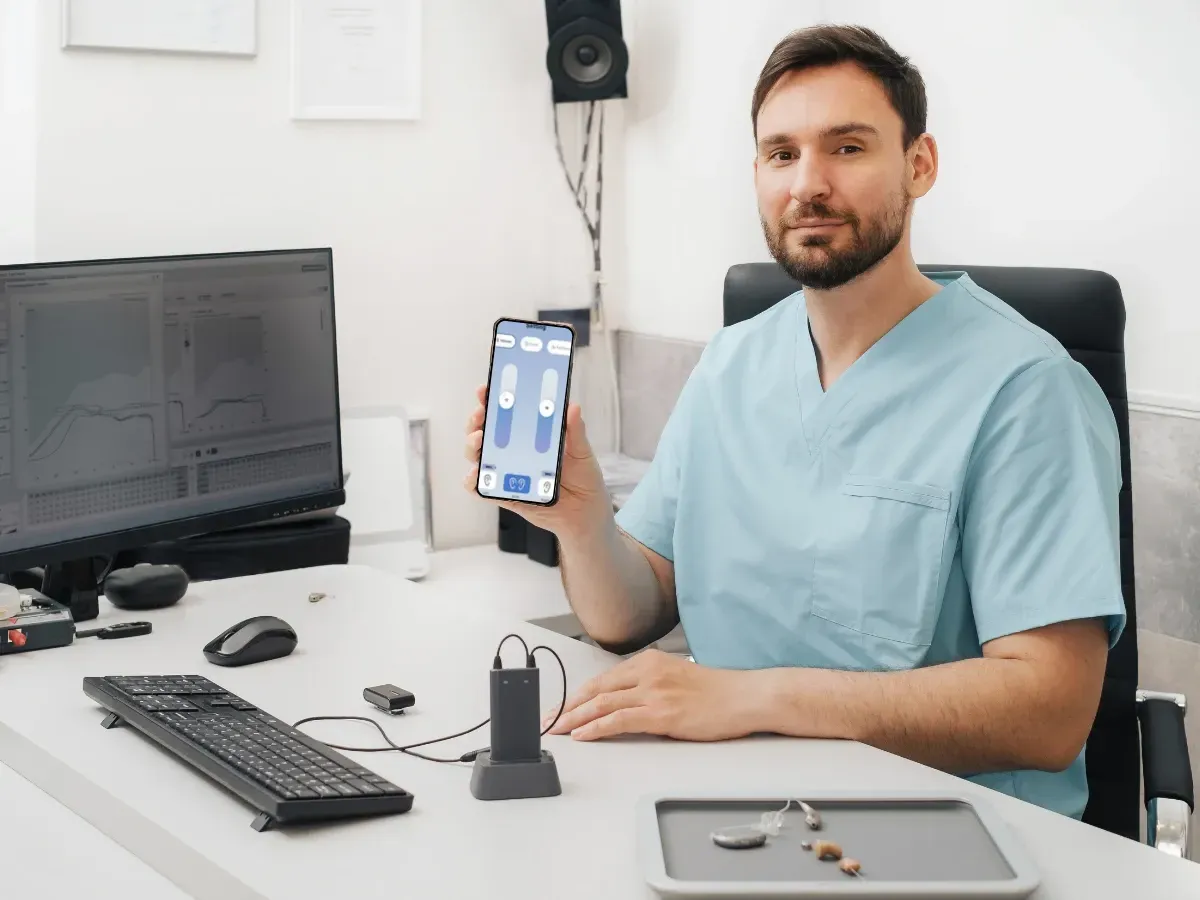
It's time to get techy! Hearing aids today are packed with incredible technology that goes beyond simple amplification. In this round, we'll explore the features that can make a big difference in your listening experience.
BTE Hearing Aids
Generally, BTE hearing aids have the edge when it comes to advanced technology. Their larger size allows for more sophisticated components and features. Here are a few examples:
- Noise reduction: BTE hearing aids typically do a great job of reducing background noise, which helps in understanding conversations in difficult settings.
- Directional microphones: These microphones focus on sounds coming from a specific direction, helping you hone in on the person you're talking to.
- Bluetooth connectivity: Numerous BTE models provide effortless connection to smartphones and various devices, enabling you to stream phone calls, music, and additional content straight to your hearing aids.
- Rechargeable batteries: Say goodbye to those tiny hearing aid batteries! Many BTE hearing aids come with rechargeable options for added convenience.
ITE Hearing Aids
While ITE hearing aids may have size limitations, they can still pack a technological punch, especially the larger ITE models. These can often include features like noise reduction, directional microphones, and even Bluetooth connectivity in some cases.
And the Winner Is...
BTE hearing aids take the lead in this round! Their larger size and design flexibility allow for a wider range of advanced features and technology. However, don't count out ITEs, especially the larger models, which can still offer impressive technology to enhance your hearing experience.
Round 4: Lifestyle Considerations

Your lifestyle significantly influences the ideal hearing aid choice for you. Let's examine how ITE and BTE hearing aids compare for various lifestyles.
Active Lifestyles and BTEs
If you lead an active lifestyle, BTE hearing aids might be a good fit. They are generally more resilient and water-repellent, which makes them ideal for sports, outdoor pursuits, and even those unforeseen splashes! Many BTE models also come with rechargeable batteries, so you don't have to worry about changing tiny batteries on the go.
ITE for Phone Use
ITE hearing aids can be more convenient for frequent phone users. Because they sit inside the ear, they don't interfere with holding the phone receiver to your ear, providing a more natural and comfortable phone call experience.
Dexterity and Handling
If you experience dexterity problems or struggle with handling small items, BTE hearing aids may be simpler to use. Their larger size and controls can make them simpler to insert, remove, and adjust.
And the Winner Is...
It's another tie! The optimal decision relies solely on your personal preferences and way of living.
If you're active and need a durable, water-resistant hearing aid, BTEs might be a good option. If you use the phone frequently or have dexterity challenges, ITEs or BTEs could both be suitable, depending on your preferences.
Round 5: The Price of Hearing: ITE vs. BTE Hearing Aids
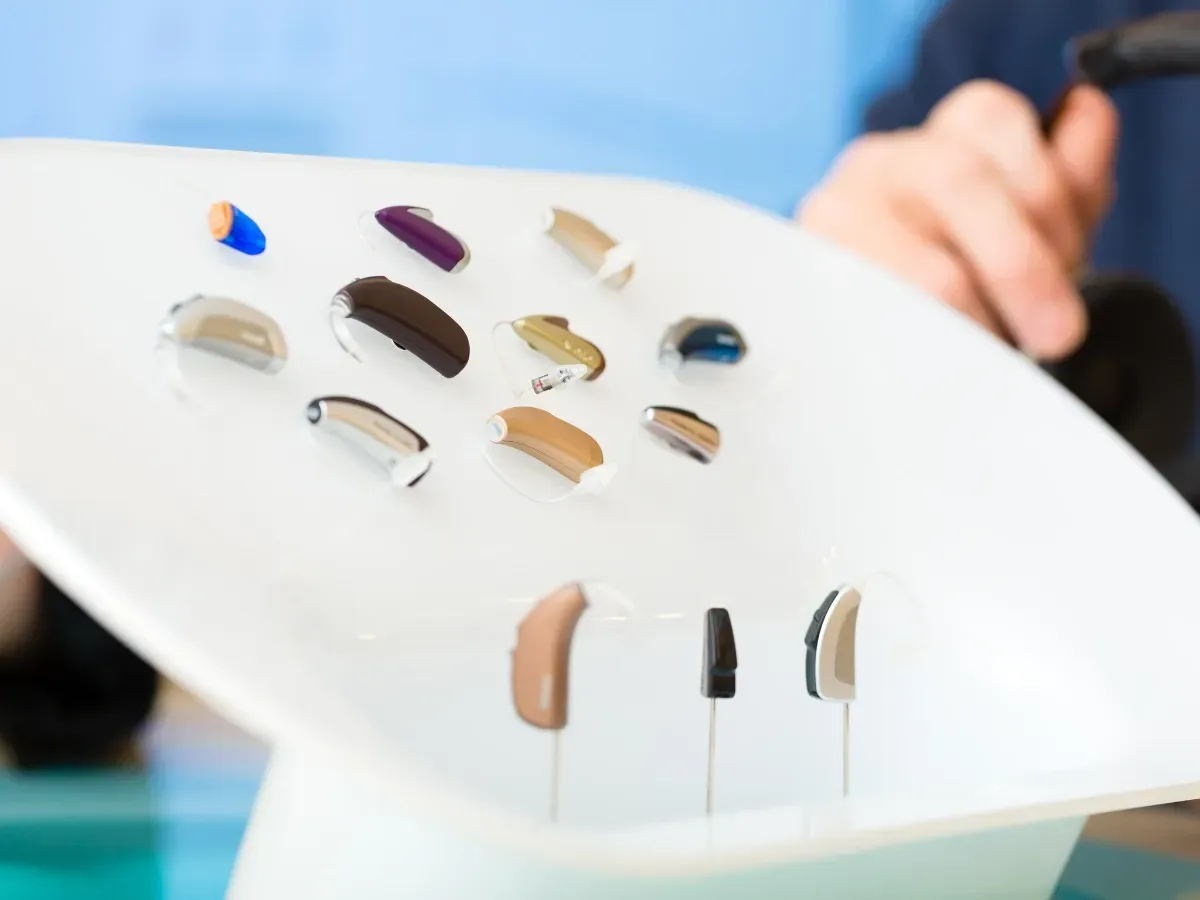
Let’s discuss price tags. The cost of hearing aids can vary greatly depending on the style and technology.
ITE Hearing Aids
ITE hearing aids are usually more affordable. These sleek, in-the-ear devices are perfect for those looking for something discreet and functional. If you have mild hearing loss or just need a simple fit, ITEs are a solid choice.
BTE Hearing Aids
Now, BTEs tend to lean on the pricier end. These behind-the-ear models pack in more features, like rechargeable batteries and advanced sound processing. They're ideal for moderate to severe hearing loss and offer greater power and versatility. If you need extra amplification, BTEs are definitely worth considering.
And the Winner Is...
It's a draw! Both ITE and BTE hearing aids offer a range of options to fit different budgets. While basic ITEs might have a lower starting price, advanced BTEs offer features that can significantly enhance your hearing experience and overall quality of life.
The Verdict: Which One Wins? ITE or BTE?
We've explored the ins and outs of ITE and BTE hearing aids, comparing their comfort, visibility, technology, and lifestyle considerations. But which type emerges as the ultimate winner?
Drumroll, please... it's a tie!
Both ITE and BTE hearing aids offer incredible benefits and can significantly improve your hearing experience. The truth is, there's no one-size-fits-all answer. The best choice depends entirely on your individual needs, preferences, and lifestyle.
ITE hearing aids excel at discretion, fitting comfortably inside the ear canal. They are a great option for those who prioritize a nearly invisible look.
BTE hearing aids are known for their power and versatility. They offer a wider range of advanced features and technology, making them suitable for people with varying degrees of hearing loss and active lifestyles.
To make the best decision for your hearing health, consider these factors:
- Degree of hearing loss: The severity of your hearing loss can influence which styles and features are most suitable.
- Lifestyle: Consider your daily activities, hobbies, and how you use devices like phones.
- Cosmetic preferences: How important is discretion to you?
- Technology needs: What features are essential for your listening experience?
- Budget: Hearing aids are available at various prices, so it's important to find an option that fits your budget.
The best way to choose the right hearing aid is to consult with a qualified hearing healthcare professional. They can assess your hearing loss, discuss your needs and preferences, and guide you toward the perfect solution for your unique circumstances.
Embrace Better Hearing
Ready to rediscover the joy of sound? Don't let hearing loss hold you back from living life to the fullest! With the right hearing aids, you can reconnect with loved ones, engage in conversations with confidence, and enjoy all the sounds the world has to offer.
Hearing aids can significantly improve one's quality of life, both personally and professionally. They can boost confidence, reduce feelings of isolation, and even improve cognitive function.
Take the first step towards better hearing today! Schedule a hearing test or consultation with a hearing healthcare professional. They can help you find the perfect hearing aid to match your needs and lifestyle.

